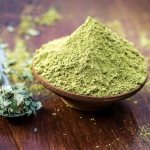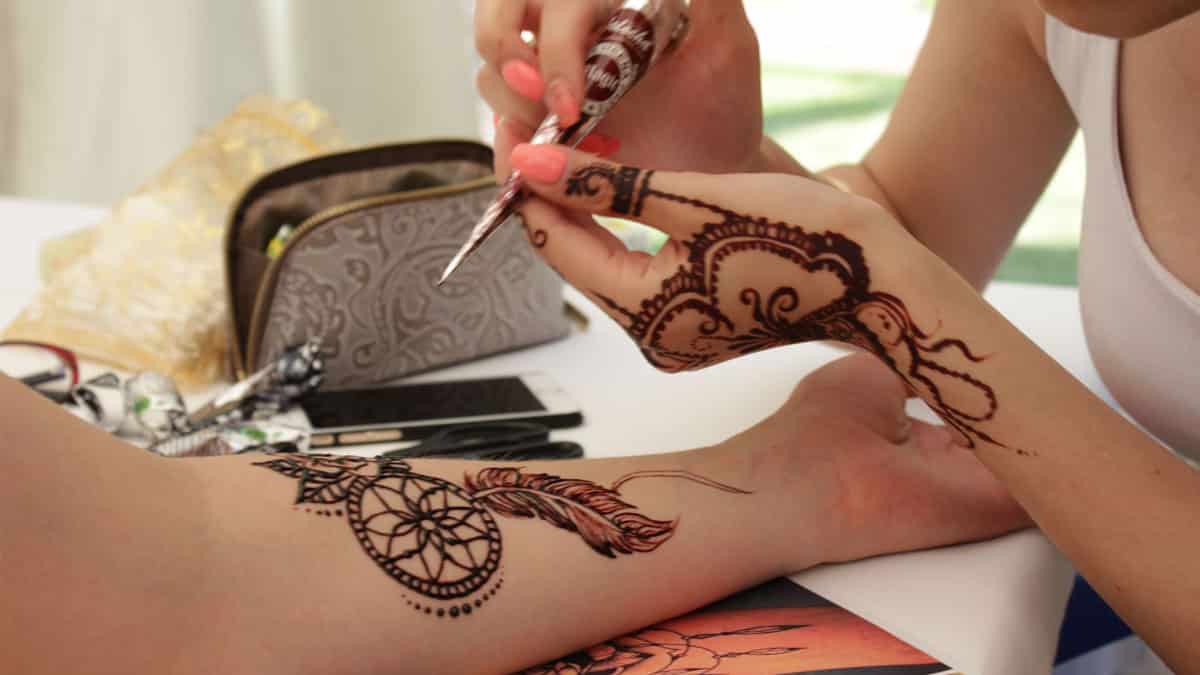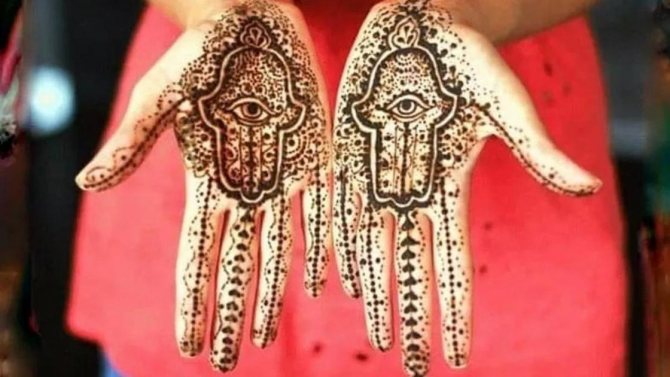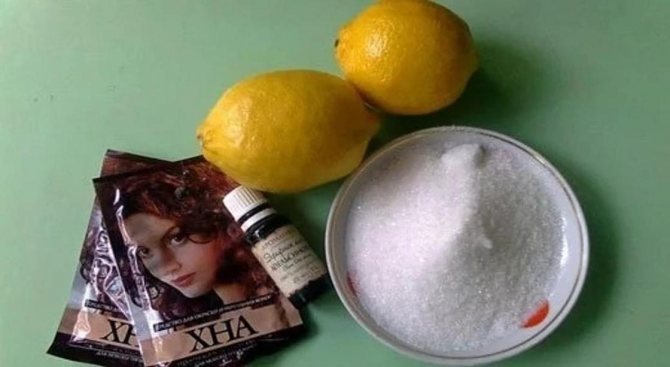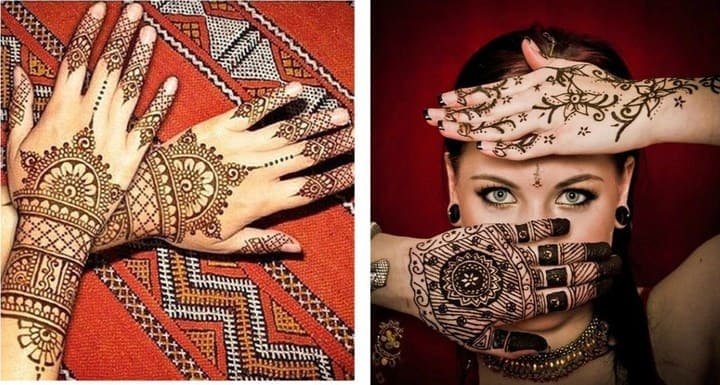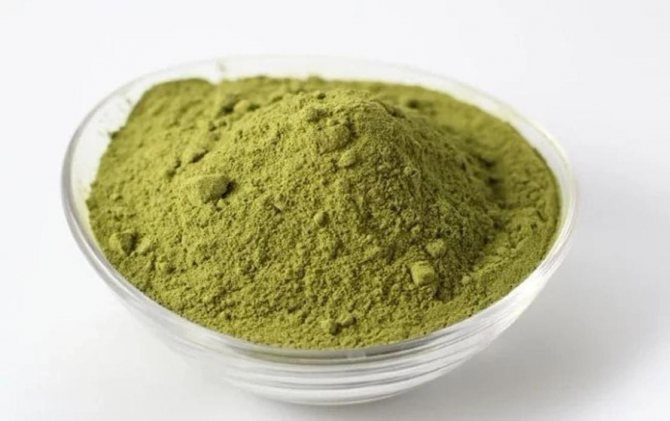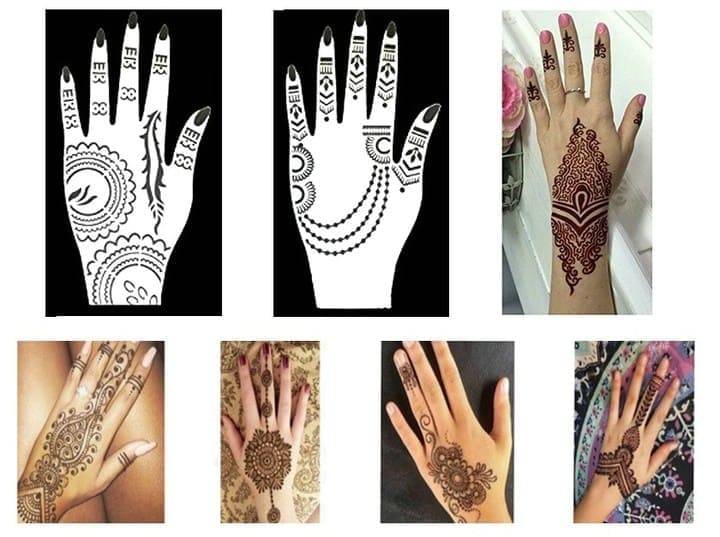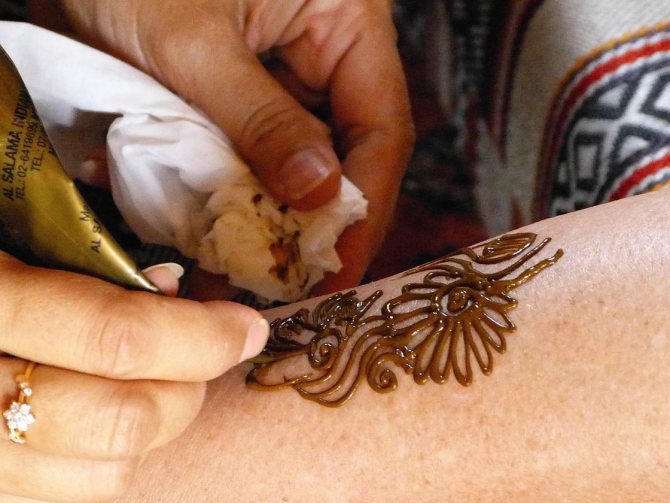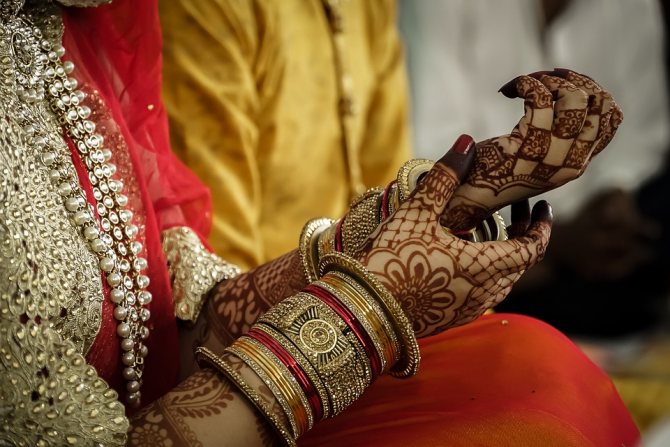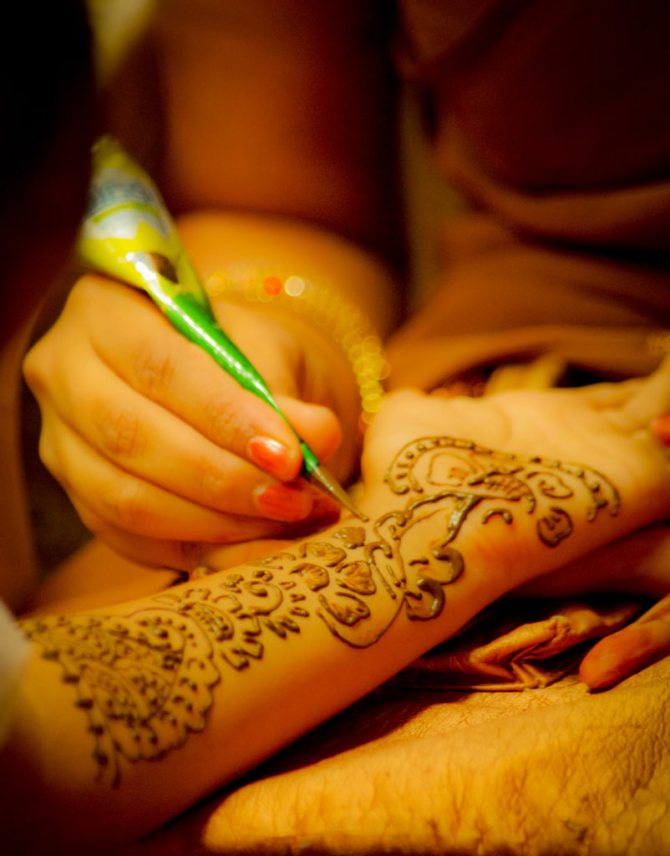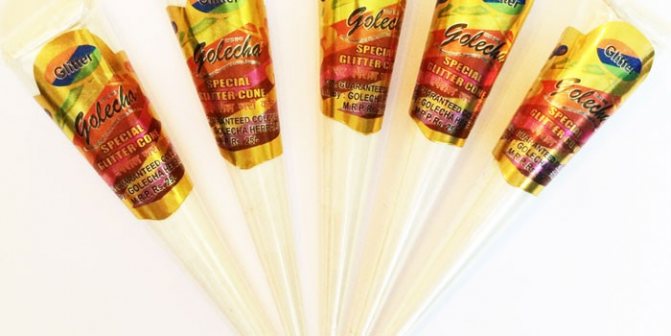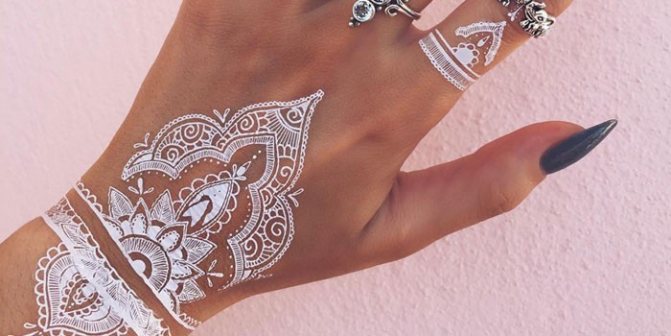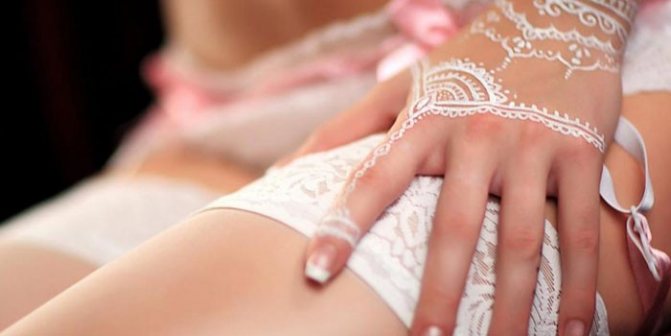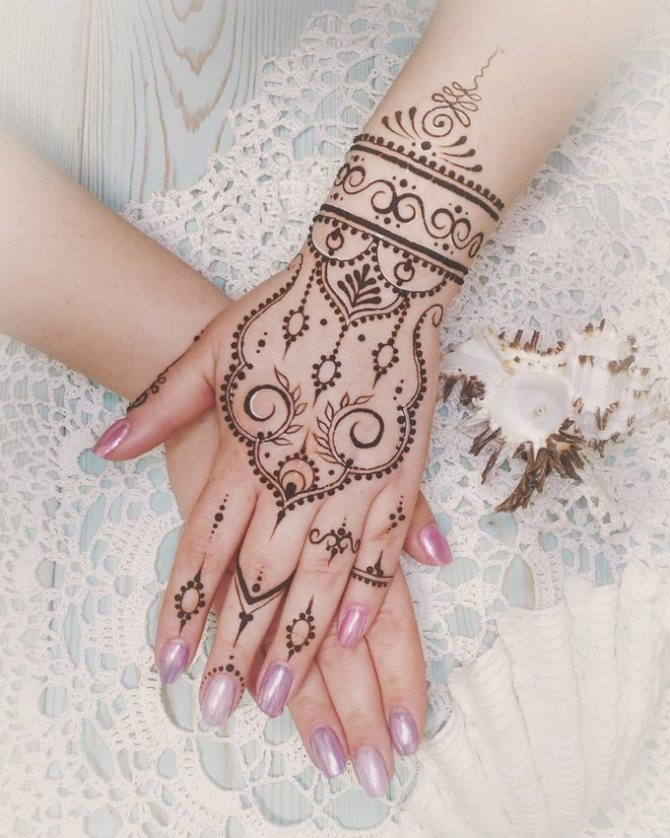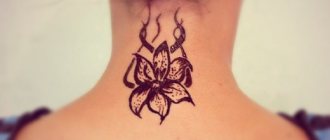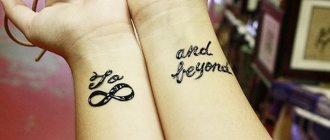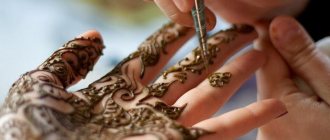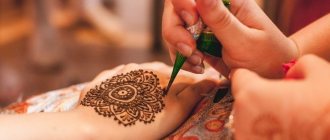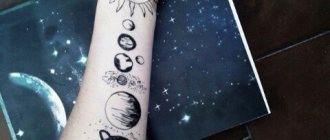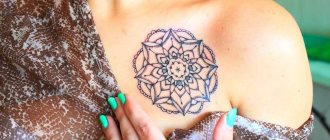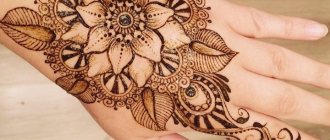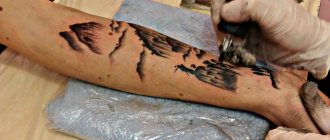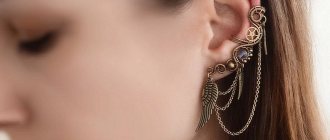How to cook paste for a henna tattoo
You can use a ready-made composition for tattoos or prepare yourself. Without henna powder you can not prepare a paste, so to start with you need to buy it. In this powder gradually pour a strong brew of black tea (for 0.5 l. of tea use 35-50 grams of powder).
To make the mendi last longer, to the mixture add 2-3 tsp. lemon or lime juice, 2 tbsp. sugar. Henna for drawing on the body is used after 20 minutes after preparation.
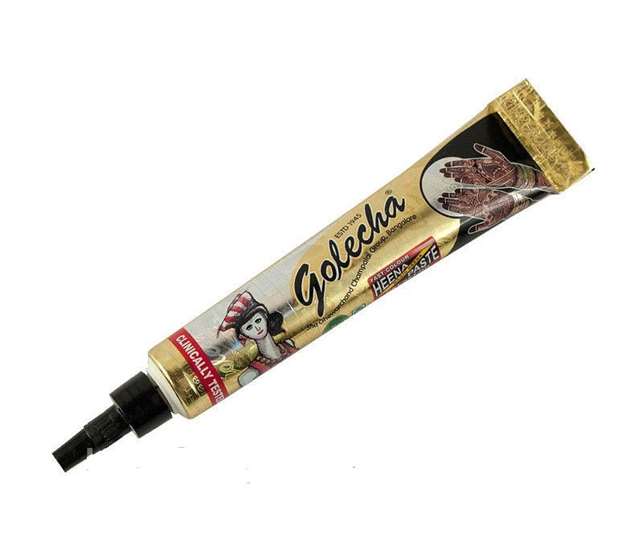
The best manufacturers of colored and natural henna


Golecha
A popular manufacturer of colored henna is the Golecha brand. It is an Indian manufacturing company. This dye has an acrylic base. Before buying it, you should study all the pros and cons. It is sold in cones and has a volume of 20 to 25 grams.
Henna for mehendi brown Golecha
Pros:
- Does not cause allergies;
- Easy to apply the patterns.
Cons:
- Easy to wash off;
- Can't get wet with water.
Pranastudio
Another good manufacturer of white tattoo compound is the brand Pranastudio.
Henna for mehendi in a cone (blue), 25 g
Pros:
- Good price;
- Applies richly to the body;
- Can be purchased everywhere.
Cons:
- Too liquid;
- Can spread when applying the tattoo.
The best manufacturers of black biotattoo paste are Golecha and Neha.
Golecha
Black henna is allergenic, so it's a good idea to test it before you apply it.
Golecha Magic MEHENDI BLACK Henna (Golecha black tattoo cone henna), 25 g.
The pros of the Golecha brand are:
- Convenient packaging;
- The weight of the cone is 25 grams, which is enough for one tattoo;
- Long time of preservation of the drawing.
Cons:
- Flowing texture;
- Allergenic.
Neha henna black
Neha body painting paste is easy enough to apply.
FAST HENNA black henna for mehendi NEHA 25 gr
Advantages:
- A rich tone;
- Thick consistency.
Cons:
- Allergenic.
GlitterTattoo
Paste for painless body tattoo with glitter is produced by GlitterTattoo brand. This paste is an excellent alternative to the colored henna.
GlitterTattoo henna
Advantages:
- Huge selection of colors;
- Easy application.
Disadvantages:
- High cost;
- Easy to wash off with water.
The best natural henna manufacturers are Neha and Kaveri.
Neha natural henna
Neha brand paste is quite popular because it is absolutely safe and has a pleasant color. The composition is completely natural and includes:
- Powder from the leaves of Lawsonia;
- Citric acid;
- Essential oils;
- Sugar.
Mehendi henna powder Neha (Neha Mehendi) 20 grams
Advantages:
- Low cost;
- No chemicals added.
Disadvantages:
- Not identified.
Kaveri
Kaveri powder is also made from natural ingredients.
Kaveri, henna for mehendi in a cone (natural, 25 gr.)
Advantages:
- Long remains on the body;
- Has a pleasant smell.
Disadvantages:
- The paste is not uniform.
How to make a tattoo stencil
To make mehendi at home, you need a stencil. The first thing to do is to print the design or letters you want on a piece of plain paper, then stick some masking tape on it (preferably a painter's tape, since you won't be able to print the letters on a piece of paper). it is easier to remove), cut out along the contour with a box cutter. The stencil is ready!
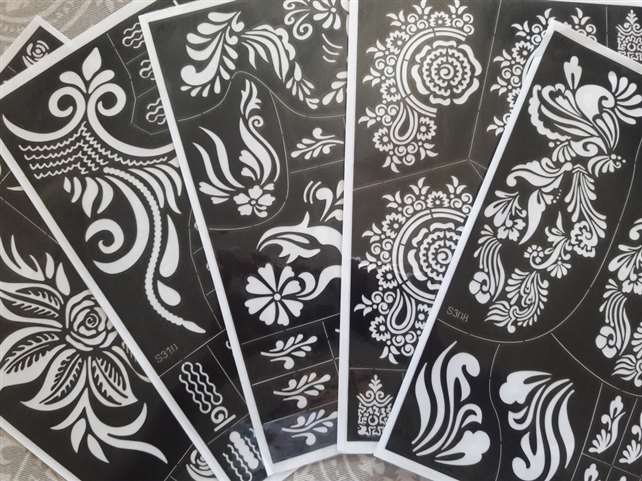

Health and Safety
Most of all, people who visit beauty salons, providing services for tattooing basma and henna, frightened by possible allergies. It should be said that tattoos with basma and henna are the most innocuous pictures that can be applied to the body. They consist entirely of natural substances, which have hypoallergenic qualities. The risk is minimized. In addition, many claim that after dyeing the hair and body henna, the regeneration process is accelerated, this technology can even treat psoriasis, alopecia and other diseases.
The only thing that can alert, sometimes the mixture includes cosmetic oils, it can be orange, lemon, grapefruit, etc. They are used to make the mark after the henna darker and more contrasting. If low-quality oil is used, undiluted, or you overheat it, you can get a burn. But in most cases, the reviews are encouraging.
This technique is used both for "tattooing" adults and for decorating children.
This paint is natural and useful for the dermis of any age, in addition, such drawings look really beautiful and stylish (especially if the ethnic style is supported by accessories and appropriate makeup).
Advantages and disadvantages:
- The skin becomes fresher and tighter, this product is sometimes added to nourishing masks and scrubs;
- Can be applied anywhere on the body, they are completely harmless;
- It is not painful, even pleasant, because the technique of applying henna can replace a tactile massage, relax after a day of work, awakening sensuality in the girls;
- The main disadvantage is that the drawing is washed off very quickly. They say that it lasts from 5 days to two weeks, it is not quite true, if a person often bathes (for example, visits the pool or swims in the sea), the tattoo will not live more than 2 days.
- The integrity of the skin is not violated, moreover, some diseases are treated;
- After themselves do not leave a sticky residue, as stickers;
- It is easy to perform yourself, if you have graduated from art school courses, it will not be difficult to draw henna on the body.
Video: how to make temporary tattoos on the hands of henna https://www.youtube.com/watch?v=hhoajSpLon8
What are the possible complications
Doing a henna tattoo yourself, you must be prepared for possible complications. If the henna is of poor quality - after its application on the skin may appear spots, redness, burns. Therefore, there is no need to save money when choosing henna for mehendi.
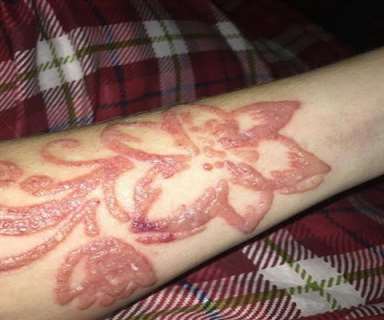

What is henna for mehendi?


Henna is the leaves from the shrub Lacsonia. Which are dried and ground to produce a powder. Such powder has temporary coloring properties. In addition to drawing, its parts are used for other types of cosmetic procedures. This substance also has antiseptic properties, so it is quite safe to apply such a composition on the skin. The properties of the leaves of this plant are even useful for the skin.
Because of its short-term action, the pattern itself is erased from the skin, without leaving any traces on it.
Mehendi painting on the arm
The most popular place for tattoos is the hand. The ornament can be diverse: from floral patterns to various geometric figures. Most often on the hands of women draw a lotus. This flower symbolizes a pure, chaste soul, a person's pursuit of perfection.
Step-by-step instructions for applying henna
Before diluting the working solution, experiment with the color. Lime (lemon) juice will give the tattoo a radiant depth, and coffee (tea) will make the color warmer and darker.
Step one. Prepare the mixture
- Sift the required amount of henna into a bowl;
- Add the strained juice of a lime;
- brew some strong coffee and add a few spoons of hot drink to the mixture;
- Cover the mixture with a napkin and leave it to swell for 10-12 hours.
The ready mixture can be stored for a week in the refrigerator or a month in the freezer. If you need to renew the pattern, you can prepare a paint in stock.
Step two. Let's apply the pigment
The paste for the drawing should be homogeneous, the consistency resembling sour cream. A too thick mixture can be diluted by adding one of the ingredients: lime juice or coffee. Then proceed to the process of drawing:
- Make a cone-shaped bag of polyethylene or foil and unload the mixture into it. In the thin part of the cone, make a hole with a large needle;
- If you are not sure that you can draw by eye, take a stencil. It can be bought or printed from the Internet;
- The place for the drawing is thoroughly washed and the hair is removed. It is possible not to touch the hairs, but take into account that they will be colored too, and the fading of hair paint will take longer than on skin;
- we apply the pigment. In principle, this reminds you of decorating a cake;
- Let the paint dry for an hour, and then carefully remove the excess mixture and wash the area with running water.
To fix it, wipe the drawing with an essential oil or other oil. It is better to use oils with a moisturizing effect, as henna dries the skin.
If you can not achieve the desired result, it remains only to wait until the pigment is not washed away and try again. Looking for how to remove a henna tattoo in one day is useless. You can wash the pattern with soap and sponge or apply a scrub. This will make the color pale, but will not remove it completely.
Mehendi painting on the leg
When decorating the leg with henna images, you need to pay attention to the location of the painting. It is believed that mehendi on the right leg is done by people seeking to find their purpose in life, to know themselves.
The left leg is painted by goal-oriented and self-confident people, the right leg - selfish people, the left - people with low self-esteem.
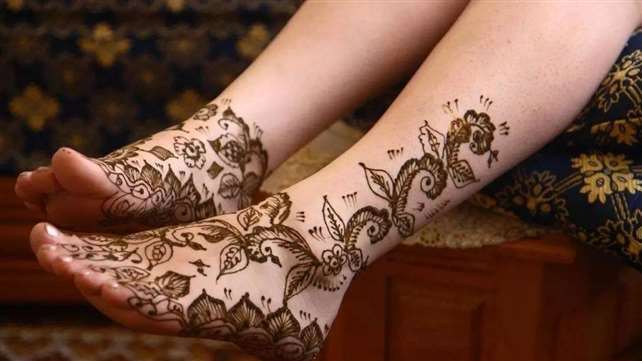

Material prices
You can find professional henna for applying mehendi in salons that sell oriental cosmetics, and in online stores. Some masters may also sell professional material for applying the pattern. Prices of henna can vary depending on the region.
The average price for henna brand Golecha is 120 rubles. And the composition from the brand Kaveri can be purchased for 75 rubles. The most expensive will be the paste from Pranastudio, which will cost about 200 rubles. This refers to the prices for the usual henna. But the mixture with glitter, will cost much higher. The average price is 800 rubles.
Mehendi painting on the body
It is allowed to henna paintings on any part of the body. Paintings on the collarbones and back look beautiful. Most girls depict animals, flowers or delicate lace. Thanks to such images there is a sense of confidence, uniqueness.
With what to draw henna?
It is clear that you can not put henna on your finger and do not draw a normal picture. Very often they use an ordinary medical syringe without a needle or toothpick. It is not always convenient and the drawing may turn out distorted. The most suitable tool for drawing is a peculiar bag with a hole, like the one used for making confectionery. Just take an ordinary transparent little bag, fill it with paste and make a small hole in the corner.
Popular mehendi designs
In mehendi, there are a huge number of patterns, symbols. Each of them has a certain meaning:
- The dream catcher is a talisman against evil forces,
- a cat on the body gives you wit and wisdom,
- The swan and peacock feathers mean success and good luck.
Popular lace, openwork drawings that emphasize femininity, grace. But most often for tattoos girls choose a variety of flowers. Such pictures will look beautiful on any part of the body.
Henna in tubes
The use of such a composition is very practical, due to the fact that it can be stored for a long period of time. This property is due to the fact that the packaging is sufficiently sealed, which does not allow the paste to spoil. Make tattoos on the body with this paint can even beginner master, who first took in his hands a tube. In such a container, the consistency of the material is a little liquid, but the drawing comes out bright and saturated. This dye is easy to apply to the skin and dries quickly. However, before using it on sensitive skin, a test should be performed. Because such pastes can cause an allergic reaction.
Mehendi care
In order for a henna tattoo to last longer, some rules should be followed:
- Before applying the paste to the body, the area should be well cleaned or peeled. It is desirable to remove hairs to avoid unpleasant feelings when the paint dries and begins to peel off.
- After finishing tattooing it is not recommended to wash the painted over parts of the body for about seven hours.
- For the next few days it is recommended to clean the mehendi with almond, coconut or olive oil.
- Try not to rub the drawing, do not apply different creams, thus, you will prolong the life of your tattoo.
Composition available in a cone


This type of packaging is the most convenient way to apply tattoos to the body. Thanks to this container, the process of painting the body is simplified, and the paint is consumed economically.
If you are a beginner in painting, then this form will be the best option for you. In such a container, the composition is stored from 2 to 6 months. However, for such a long shelf life, preservatives are added to the natural product, which is a disadvantage.
Therapeutic properties of henna
It has long been proved that henna has medicinal properties. It is important to remember that the powder is only used externally.
- In ancient times, henna powder and paste were applied to the skin to treat headaches, abdominal pain, burns (including sunburns), open wounds, fevers, mycosis and other fungal diseases, and to prevent hair loss. And for good reason: henna is famous for its astringent, antibacterial and antifungal properties.
- Henna was applied to the noses of animals so that the sensitive surface would not burn in the sun (in some countries this is still done today).
- Henna powder and decoction are used as a repellent: it is applied to goat and cowhide bags after they have been treated with salt. This protects the items from insects and moths, making the skin poisonous to them.
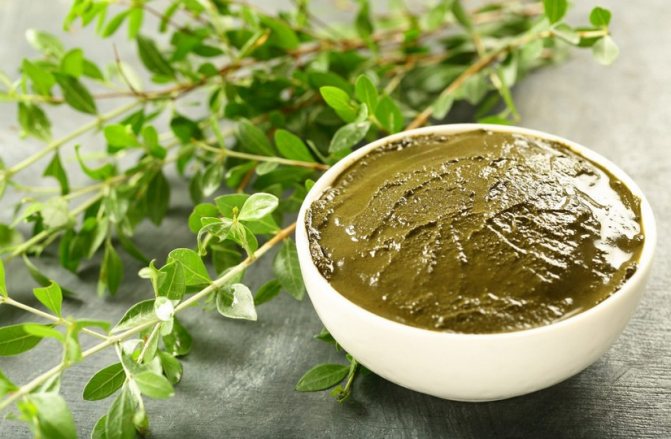

Interesting fact: Since henna acts as a self-tanner, it can be used accordingly. Before applying the powder, you need to properly prepare the skin with a scrub and degrease it to get an even color.
When and for what purpose originated
Emerged several thousand years ago, mehendi is still among the essential decorations for women in India, North Africa.
Today, white henna tattoos are done by fashionistas in all parts of the world. Increasingly, the reddish-brown hue of traditional henna is being replaced by snow-white plant patterns and flowing lines of mandalas.
Mehendi is not just a drawing with plant ornaments and mandalas, in the oriental world it is valued as a high art. Its patterns are complex, multi-component and carry different meanings.
For example, wedding mehendi, carefully performed for several hours, have erotic and protective meanings.
There are mehendi that bring good luck, protect from misfortune and illness, evil spirits.
To the classic tattoo patterns: flowers, drops - nowadays are added fictional and modern motifs. The trendsetters, the first to bring this trend into the fashion world, were Hollywood divas, indiscriminately fond of the tattoo created with the help of white henna.
White henna for hair lightening: advantages and disadvantages
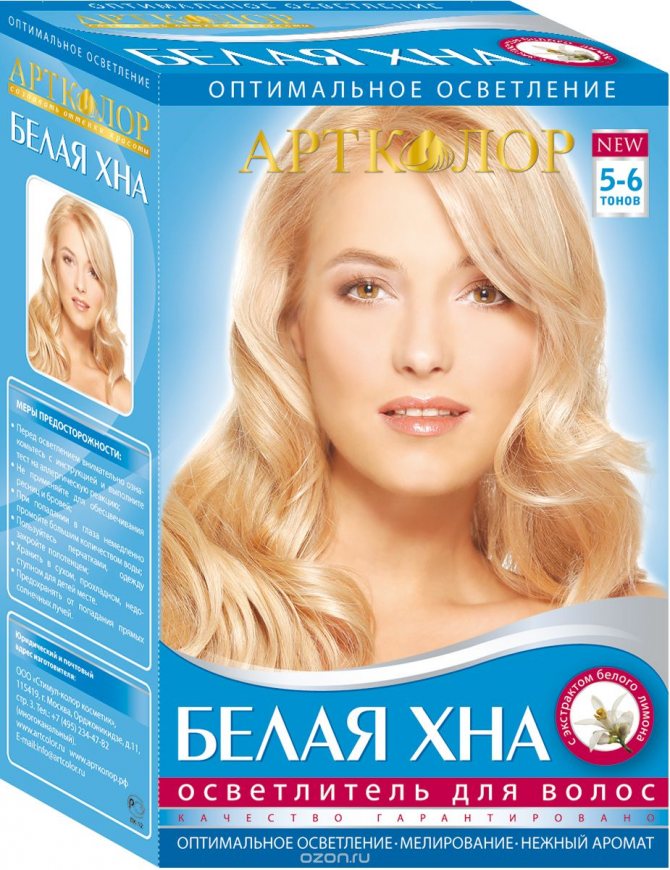

From the name it becomes clear that this type of henna is supposed to lighten the hair or bleach it
The positive qualities of white henna include:
- Effectively lightens the hair;
- It is very difficult to change from black to white, and often girls wait until their hair has acquired its natural color and then begin to lighten. In this case, there is no need to wait, the hair should become snow-white in a few treatments;
- there are natural components;
- Completely bleaches the hair;
- low price.
Despite the positive qualities, white henna for hair can be harmful.
Reviews of people who have tried this product testify to the following:
- the impossibility of predicting whether the coloring will be successful and whether the color will turn out white rather than red;
- Not suitable for gray hair or chemically curled hair;
- The color washes out quickly, after two months you have to color your hair again;
- after henna dyeing, regular dye does not hold up very well, so if the dyeing fails, you cannot go back to regular color right away;
- Since white henna has chemical impurities, it is not recommended to overdo it on the hair, it can contribute to hair loss.
According to many hairdressers, it is not necessary to prepare the hair before dyeing. Before dyeing white henna, to reduce the impact of its components on the skin, it is not recommended to wash your hair for a few days.
Mehendi - a tradition that comes from the East
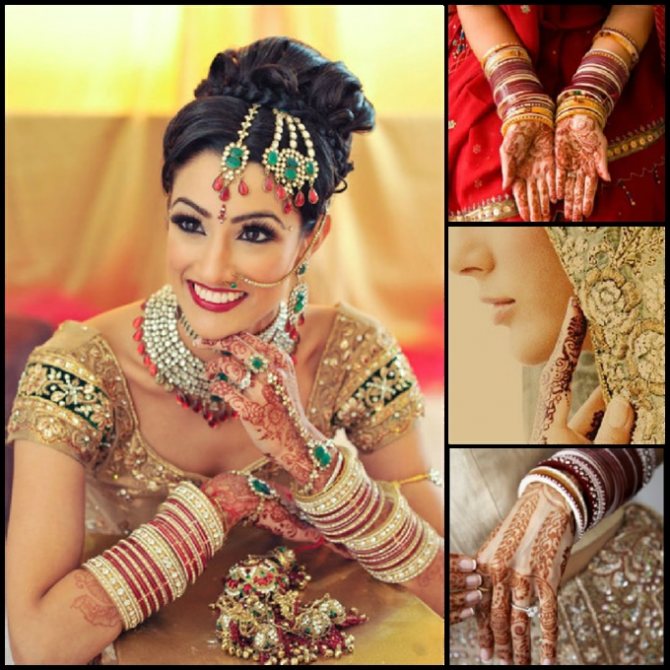

The art of painting on the body with henna dates back to the origins of Eastern culture, some say that it first appeared in India, others - in Egypt. Another name for mehendi is "mendi", which translates to "henna". The technology of mehendi is unique in that, having passed such a way and time, almost 5000 thousand years, has preserved its original appearance.
Recommended reading:
- How to even out your face with makeup: 20 beauty tips for perfect skin tone
- The right eye shape: how to get the perfect makeup look
- Almond-shaped eyes: features of day and evening makeup
A henna drawing, called mehendi, unlike tattoos, which are widespread in Europe, is painless, without the introduction of the dye under the skin and without damaging the epidermis. This type of art finds its admirers among the representatives of completely different layers of society. For some it is a way of self-expression, a peculiar style, for others it is an art of fantastic beauty, a part of tradition and even a talismanic protection. Mehendi partially changes its traditional image depending on the belonging to one of the formed styles - Indian, Arabic and Asian, Moroccan.
- The Moroccan style is directly related to the image of flowers, geometric shapes with clear lines. The henna has a disinfecting effect, accordingly, historically they were applied on the hands and feet in North Africa.
- For mehendi in the Arabian style is characterized by botanical themes. The drawing consists mainly of small flowers, leaves, plants, fruits collected in a single composition.
- The Indian style is a design directly related to the illumination of rituals, amulets, holidays. Therefore, the motifs can be very diverse, most often depicting animals (elephants), flowers, geometric shapes. It is customary to almost completely fill the space of the place where the picture is applied, be it hands or feet, which creates the effect of gloves or socks.
- Asian mehendi is difficult to distinguish from Indian mehendi, because they are very similar in their style, and you can recognize them by the fact that in the first case, the tips and pads of the fingers, palms and feet are painted completely with henna.
White henna for hair result
Most women's hair after bleaching looks like a "rag", "straw", "washcloth" or "nest" at best. Very comfortable, and most importantly, decorative. In the worst case, on top of that you will get an "indescribable" and most likely "inexpressible" color. If you want to become a blonde, no matter what it takes, you are a brave woman!
The product is effective, for sure. Except if your hair has never been colored before, then expect a normal hair shade. But if you have colored your hair before, alas, you can't avoid yellowing. In general, judging from the many unhappy comments, a good result is unlikely. Do not run to the stores for another novelty, but better to consult with hairdressers, read reviews and make up your own opinion, so that then you do not have to "reap the benefits".
